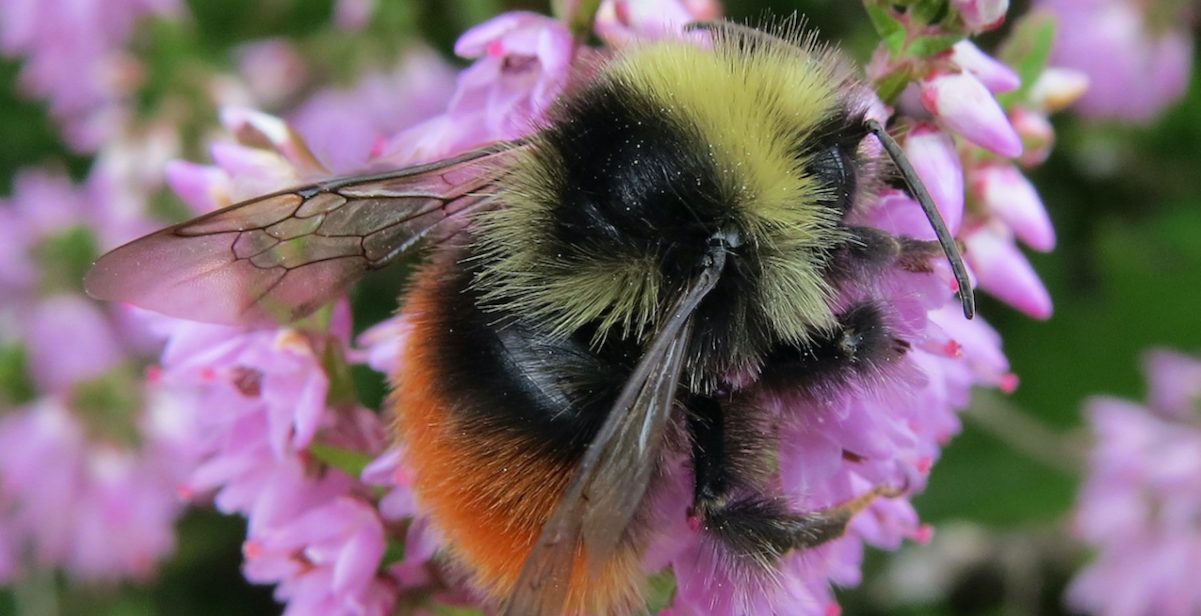If you feel flustered when you hear the humming drone of bumblebees, consider this: We’re far more dangerous to bumblebees than they are to us. And those furry critters are absolutely key to maintaining our ecosystem. Why do we need bumblebees? They are some of the best pollinators around. In fact, they’re the only insect that can pollinate tomato plants.
This summer, the Bumblebee Conservation Trust wants you to learn about bumblebees. The trust has created accessible, educational projects for years. It exists to conserve bumblebees through public engagement, education, and land management. And now it’s brought its favourite insects’ lives into the public sphere, exhibiting in empty shops in Derbyshire.
With the use of innovative technology, a 3D animated film is projected into public spaces. And at the same time, visitors listen to local people reading out a specially written poem. “We want to put a little bumblebee into people’s heads,” says Andy Benson, education officer for Pollinating the Peak, the project overseeing the exhibition. If you’d like a little bumblebee in your head, just consider their importance.
Why do we need bumblebees for pollination?
Bumblebees are an essential part of our food chain. But they don’t only pollinate fruiting plants. They are also responsible for pollinating about 90% of all plants. The reason they are such efficient pollinators is that their big, hairy bodies enable them to carry lots of pollen. And they use buzz pollination, a technique that sees them buzzing next to anthers (the parts of a flower where pollen is produced) to release more pollen.
Why do bumblebees need help?
The main problem is that we’ve lost 97-98% of our wildflower meadows. But according to Benson, that’s excellent news. “We don’t have to go out and catch the bees to help them,” he says. “All we need to do is plant flowers”. And if you don’t have a big enough garden to plant an entire wildflower meadow, don’t let that put you off.
Benson explains that because of bumblebees’ inefficient flying technique, they can only fly for around 40 minutes before tiring. “Even a small window box can mean the difference between an exhausted bee and a nourished one,” he says. Plants that attract bumblebees include lavender, honeysuckle, and alliums.
And if you want to go further to help bumblebees, help spread the word. Share bumblebee news on social media, join local initiatives, and engage by helping collect data. “Climate change can seem too big for an individual to do anything about,” says Benson, adding that small steps can have big results.
The Hello Bumblebee exhibition
Hello Bumblebee was originally going to be an interactive exhibit, but the pandemic put a stop to that. Benson and his colleagues worked hard to come up with a way that would engage the public whilst maintaining social distancing. And the result, Hello Bumblebee, opened in a Derbyshire shopping centre in June to positive reviews.
The next stop is Matlock School, and, restrictions permitting, the exhibition will be moving in and around Derbyshire for the next few months. Stay up to date with where to see it by visiting the Bumblebee Conservation Trust website.

